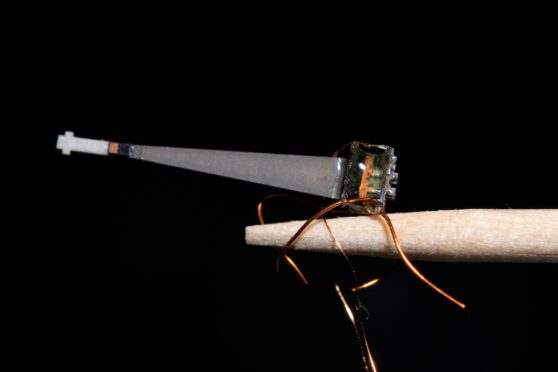Tiny robotic bees are being developed as part of a £640,000 project to better understand how bees pollinate thousands of plants including potatoes, tomatoes and blueberries.
The three-year project involves Stirling University‘s evolutionary biologist Dr Mario Vallejo-Marin and the University of Massachusetts Lowell‘s electrical engineer Dr Noah Jafferis.
The pair will build tiny robots that can reproduce the buzzes of pollinating bees in a bid to better understand how bees pollinate plants and which bees do it best.
They said the project was not designed to create robotic substitutes for bees, but instead to better understand pollination and the diversity of bee species.
“A bee’s buzz shakes the pollen out of the flower but, until now, the only way to recreate that process has been with a mechanical shaker weighing 2-3kg,” said Dr Vallejo-Marin.
“Our project transforms heavy shakers into tiny robots that more closely resemble a bee buzzing a flower; this will help us study how the bee’s characteristics affect the buzz and what types of vibrations are most effective for pollination.
“Understanding buzz pollination better could lead to stronger motivation for conserving the diversity of bees, beyond honeybees and bumblebees, as well as potentially optimising fruit and vegetable yields in agriculture.”
He said the robotic bees are the size of a fingernail and weigh a quarter of a honeybee.
“They will allow us to control the vibrations – their pitch, force and timing – and simulate bees’ interactions with flowers in order to really understand how the characteristics of the bee and the buzzes affect pollination,” added Dr Vallejo-Marin.
Dr Jafferis said the robotic bees will also be developed to include novel, bio-inspired designs for grasping and other functional behaviours of bees.
He said: “These experiments, together with computer simulations, will allow us to build a deeper understanding of which aspects of buzz pollination are most important for pollen release.”

